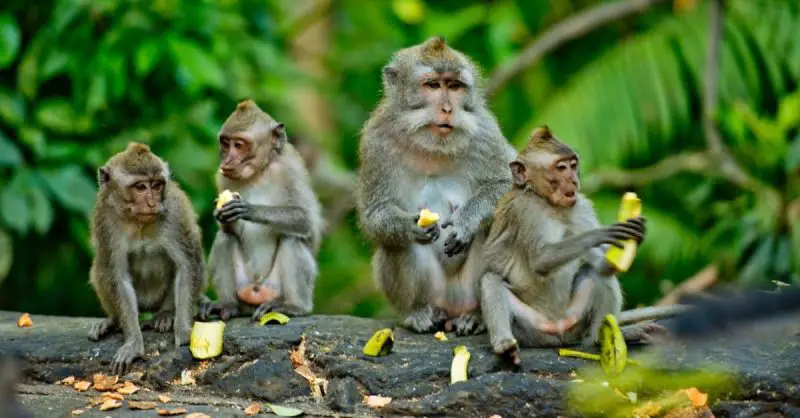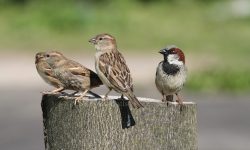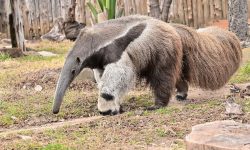Monkeys are some of the most social animals in the animal kingdom. Whether swinging through the treetops or foraging on the forest floor, they’re rarely alone. Instead, they live in tight-knit communities known as troops, groups, or bands. But why is group living so important to these primates? As it turns out, their social behavior is deeply rooted in survival, reproduction, and learning.

The Survival Advantage
Safety in Numbers: Outsmarting Predators Together
In the wild, danger is always just a heartbeat away. Whether prowling in the grass or gliding through the canopy, predators like leopards, eagles, and venomous snakes are constantly searching for prey. For a lone monkey, this world is perilous—there’s no one to sound the alarm, no one to offer backup, and no second chance. But within a group, the odds shift dramatically.
Monkeys rely heavily on the collective vigilance of the troop. With dozens of eyes scanning every direction, threats are detected quickly. Some species even assign sentinels—monkeys that perch high in the trees, watching silently for danger. At the slightest hint of a predator, they erupt in sharp, distinctive alarm calls, warning others to freeze, flee, or take shelter. These calls are often specific—different sounds for a snake on the ground versus an eagle overhead—allowing for fast, precise reactions that can save lives.
A United Front: Mutual Defense in Action
Monkeys don’t just rely on early warnings—they fight back when necessary. In many group-living species, adult males work together to confront and intimidate predators. Baboons, for instance, have been seen banding together to chase away jackals or stand their ground against big cats by baring their teeth and roaring in unison.
Meanwhile, females often form protective circles around their young, shielding them in times of danger. When under attack, the group’s response is coordinated and swift, drawing on the strength of social bonds and practiced behaviors. Weaker or younger members—who might not survive alone—benefit from this built-in safety net. Just by staying close to the group, they dramatically increase their chances of survival.
Living in a group doesn’t just make monkeys safer—it turns them into a highly responsive, well-defended community. In the battle for survival, cooperation isn’t just helpful. It’s essential.
Better Access to Resources
Finding Food as a Team: The Power of Collective Foraging
In the dense jungles, high canopies, or dry savannas where monkeys live, food can be unpredictable. Fruits ripen briefly, leaves vary by season, and insects move constantly. Surviving in such an environment requires not only agility but also clever strategy—and that’s where group living gives monkeys a crucial edge.
By foraging as a team, monkeys dramatically increase their chances of finding enough food. Group members spread out across a wide area, exploring different paths and tree canopies. When one monkey discovers a fruiting tree or a hidden patch of insects, it often calls out or signals the others. This kind of communication helps the entire troop take advantage of short-lived or scattered food sources before they’re gone.
Some species even show evidence of specialized foraging roles. More experienced individuals may act as leaders or guides, steering the group toward familiar feeding sites. Others act as scouts, ranging ahead to investigate unfamiliar areas. This level of coordination allows the group to find food more efficiently than any one monkey could alone.
Guarding Feeding Sites: Strength Means Sustenance
The benefits of group living don’t stop at finding food—they extend to keeping it. When a troop comes across a valuable food resource like a large fruiting fig tree or a termite mound, they’re not the only ones interested. Competing troops or other animals may try to move in, leading to conflict.
But large, well-organized groups have strength in numbers. Together, they can stand their ground and fend off rivals. Dominant males may position themselves defensively, while the rest of the group feeds under their protection. In some species, vocal threats or aggressive displays are enough to warn others away.
This ability to find, share, and defend food ensures that even the most vulnerable members—juveniles, nursing mothers, or elderly individuals—have access to nourishment. In this way, the group becomes not just a social unit but a survival machine, maximizing food security through teamwork and strategy.
Social Learning and Intelligence
Learning Through Observation: The Social Classroom of the Forest
In the world of monkeys, education doesn’t happen in schools—it happens in the treetops and forest floors through constant observation. Young monkeys spend much of their early life watching and mimicking older members of the troop. This form of learning is crucial for survival.
They observe how to peel fruit, how to avoid poisonous plants, and even how to use simple tools—like using sticks to fish termites from their nests or stones to crack open nuts. In some species, mothers are primary teachers, guiding their offspring through everyday tasks with gentle nudges and demonstrations. But social learning isn’t limited to mother-infant bonds. Juveniles often tag along with older siblings or tolerant adults, absorbing knowledge through silent apprenticeship.
This type of cultural transmission—the passing of knowledge and behavior from one generation to the next—is one of the clearest signs of primate intelligence. It helps ensure that young monkeys inherit not just genes, but also essential survival strategies learned through experience.
Developing Communication Skills: The Foundations of Social Intelligence
Group life also shapes a monkey’s ability to communicate and navigate complex social relationships. From subtle facial expressions and intricate hand gestures to loud vocalizations and grooming rituals, monkeys possess a wide range of tools for interacting with one another.
These interactions aren’t just for show—they serve critical social functions. A quick lip smack might defuse tension. A certain call might signal food nearby. A stare might challenge hierarchy. Through constant engagement, monkeys learn how to interpret signals, respond appropriately, and maintain their place in the social fabric of the group.
The more socially complex a species is, the more nuanced and expressive its communication tends to be. In species that form large or fluid groups, individuals must constantly negotiate friendships, rivalries, alliances, and status. This social pressure is thought to drive cognitive evolution, giving rise to problem-solving skills, empathy, and even a basic understanding of fairness.
In short, monkey troops are not just communities—they are dynamic classrooms, arenas of emotional intelligence, and proving grounds for future leaders. Living in a group challenges monkeys to grow smarter, more adaptable, and more socially skilled than they ever could alone.
Reproductive Success
Mating Opportunities Within the Group: The Social Dynamics of Reproduction
Living in groups not only helps monkeys stay safe and find food—it also plays a vital role in reproductive success. In many monkey species, group life shapes who mates, when, and with whom.
For males, group living often leads to competition for dominance. High-ranking males typically gain priority access to females during mating seasons. Their status is earned through strength, displays, or social alliances, and maintaining it requires constant vigilance. Though this hierarchy may seem unfair, it ensures that the strongest or most socially adept individuals pass on their genes.
For females, however, group life can bring advantages in choice. Instead of being limited to one mate, females in larger groups may select from multiple males, potentially choosing based on health, behavior, or genetic diversity. This increases the likelihood of healthy offspring and genetic resilience within the population.
Group dynamics also help synchronize mating and birthing cycles, allowing multiple infants to be born around the same time. This synchronicity is particularly beneficial for species that practice cooperative care, as it creates a shared focus on nurturing the next generation.
Help with Childcare: Alloparenting in Action
One of the most remarkable aspects of group living among monkeys is the shared responsibility for raising the young. In many species, mothers are not alone in their parenting duties. Other group members—known as “alloparents”—step in to help care for the infants.
These helpers may be older siblings, aunts, or even unrelated individuals. They carry the babies, groom them, protect them from danger, and help keep them warm. In some cases, even males participate in childcare, which is relatively rare among mammals. These contributions allow mothers to rest, forage more efficiently, or invest in future offspring sooner.
This cooperative parenting system increases the survival chances of the young. Infants get more attention, more physical contact, and better protection from predators. At the same time, young alloparents gain valuable experience in childcare, preparing them for when they become parents themselves.
Through this shared investment in the next generation, monkey societies become more stable and interconnected. The bonds formed during these early interactions often persist throughout life, shaping alliances and social hierarchies for years to come.
Emotional Bonds and Social Stability
Grooming and Trust: The Glue That Holds the Group Together
In monkey societies, grooming isn’t just about removing dirt or parasites—it’s an essential act of emotional connection. When one monkey gently picks through another’s fur, it’s offering more than cleanliness: it’s building trust, easing anxiety, and strengthening social ties.
Grooming helps calm nerves and reduce tension after stressful events, such as fights or environmental threats. Scientists have even observed that monkeys’ heart rates slow down during grooming, a clear signal of its soothing effect. This behavior also serves as a currency in the group, where individuals groom not just close kin, but also potential allies, trading favors for future support.
The strength and number of grooming relationships often determine a monkey’s social success. In times of conflict, monkeys with more grooming partners are more likely to find protection or allies. In essence, grooming weaves the social fabric of the troop, keeping individuals connected and group life cooperative.
Hierarchies and Harmony: The Role of Social Order
Life in a monkey group is rarely chaotic. Most species follow a clear social hierarchy, which helps regulate access to food, mates, and leadership. These hierarchies are often shaped by age, strength, alliances, and inherited rank, especially in matrilineal societies where daughters inherit their mothers’ status.
By understanding their position in this structure, monkeys reduce the need for constant aggression. Knowing when to yield or when to assert oneself allows group members to coexist with less tension. This doesn’t mean that life is conflict-free, but structured dominance helps keep violence and chaos in check.
Higher-ranking monkeys often enjoy privileges such as first access to food or mating opportunities. However, lower-ranking individuals still benefit from the security and shared resources of group living. Additionally, strong social bonds—built through grooming, play, and cooperation—can sometimes override rank, giving socially savvy monkeys more influence than their status alone might suggest.
Ultimately, emotional bonds and social organization work hand in hand. They give monkey troops stability, cohesion, and the ability to function like a well-tuned community—one where every member, from alpha to infant, has a role to play.
Species That Live in Groups
Examples of Group-Living Monkeys
Across the monkey world, social living is the norm rather than the exception. While group size and structure vary widely, certain species stand out for their complex group dynamics, cooperative behaviors, and rich social lives.
Baboons: Masters of Group Hierarchy
Baboons are among the most social of all primates, living in large troops that can exceed 100 individuals. These troops operate with strict social hierarchies, particularly among males who compete for dominance and access to mates. Females often inherit their social rank from their mothers. Grooming is central to baboon society—it helps maintain alliances, settle disputes, and reinforce bonds across generations. Their large numbers and strong group coordination make baboons highly adaptable to varied environments, from savannas to mountains.
Capuchin Monkeys: Clever, Cooperative, and Curious
Capuchins are famous for their intelligence and social cohesion. Living in medium-sized groups, they display impressive cooperation, from foraging together to sharing food. Capuchins have been seen using tools—like sticks to extract insects or stones to crack nuts—and younger monkeys often learn by watching older group members. Their grooming rituals and playful behaviors build strong social bonds, helping the group function smoothly.
Howler Monkeys: Vocal Guardians of Territory
Howler monkeys live in groups ranging from 6 to 20 individuals, and their social life revolves around sound. Their haunting, echoing calls can travel up to three miles through dense forest, serving as a warning to rival groups and reducing the need for physical conflict. Group members coordinate movement and feeding, often resting together high in the canopy. Males typically lead the vocalizations, but the entire group depends on this acoustic communication to maintain space and safety.
Vervet Monkeys: Sentinels of the Savanna
Vervet monkeys, found across sub-Saharan Africa, are well-known for their alarm calls, which can distinguish between aerial, terrestrial, and slithering predators. This level of vocal sophistication shows how finely tuned their group communication has become. Living in groups of 10 to 50 individuals, vervets rely on social structures and learned behavior to navigate complex environments. Infants are raised communally, and social grooming plays a central role in reducing tension and maintaining trust.
These species demonstrate the immense advantages of living in groups—from shared protection and child-rearing to communication and problem-solving. Their societies are not random gatherings, but intricate systems of cooperation that have evolved over millions of years.
When Monkeys Don’t Live in Groups
Although social living is the norm for most monkey species, solitude does occur—particularly under specific life circumstances or behavioral strategies. These solitary phases are usually temporary and linked to social dynamics within the group.
Lone Males and Social Rejection
In many species with rigid dominance hierarchies—like baboons or macaques—adult males may be expelled from the troop after losing a battle for status or being challenged by younger rivals. These ousted males often enter a solitary phase, roaming alone in search of new opportunities. Though isolation can be risky, it may be a strategic pause before finding another group to join or assembling a new troop by attracting females.
Adolescents on the Move
In some monkey societies, young males leave their natal group upon reaching sexual maturity. This dispersal reduces inbreeding and encourages genetic diversity across populations. During this transition, these males often live alone or in temporary bachelor groups before integrating into a new troop.
Naturally Solitary Tendencies
A few primates lean toward more independent lifestyles, especially in environments where resources are scarce or competition is intense. For example, some nocturnal primates, like the owl monkey (a New World monkey), live in small family units or pairs rather than large groups. While not fully solitary, they exhibit reduced social complexity compared to species like capuchins or baboons.
Solitude as a Strategic Choice
Temporary solitude can also be a strategy. A lone monkey might avoid confrontations, seek out food quietly, or wait for the right moment to challenge for dominance again. Solitary living is not necessarily a sign of weakness—it can be a tactical step in a long-term social game.
Ultimately, even monkeys that live alone do so within a broader social context. Group life remains the foundation of primate evolution, but flexibility in social behavior allows individuals to adapt, survive, and eventually reconnect.
Conclusion: Together Is Better
Monkeys live in groups not just for companionship, but because it increases their chances of survival, reproduction, and learning. Group living allows them to protect each other, find food more efficiently, raise their young cooperatively, and form meaningful social bonds. In the complex world of the forest or savanna, a monkey alone is at a disadvantage—but together, they thrive.






